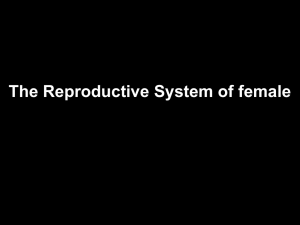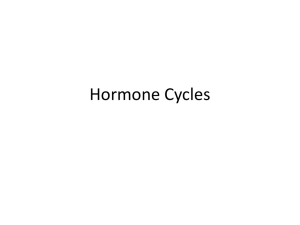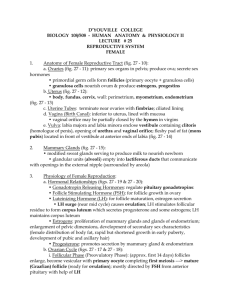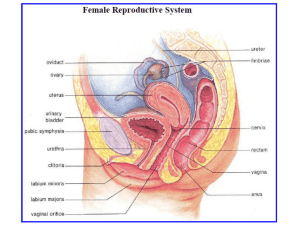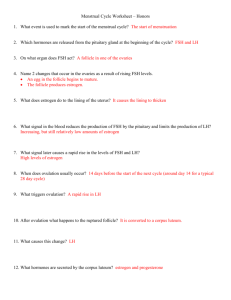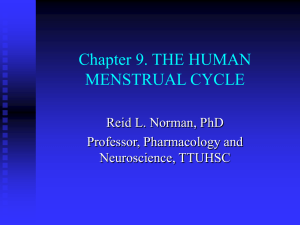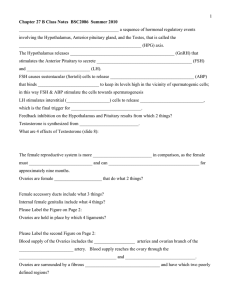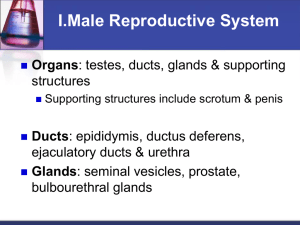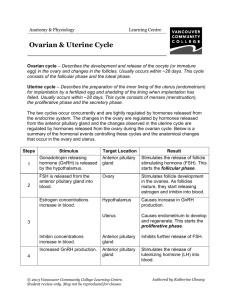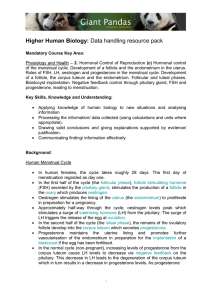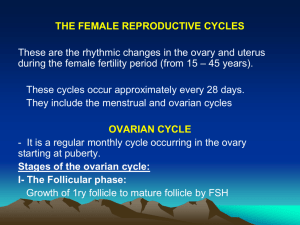Unit P Notes #4 -Uterine Cycle - Mr. Lesiuk
advertisement
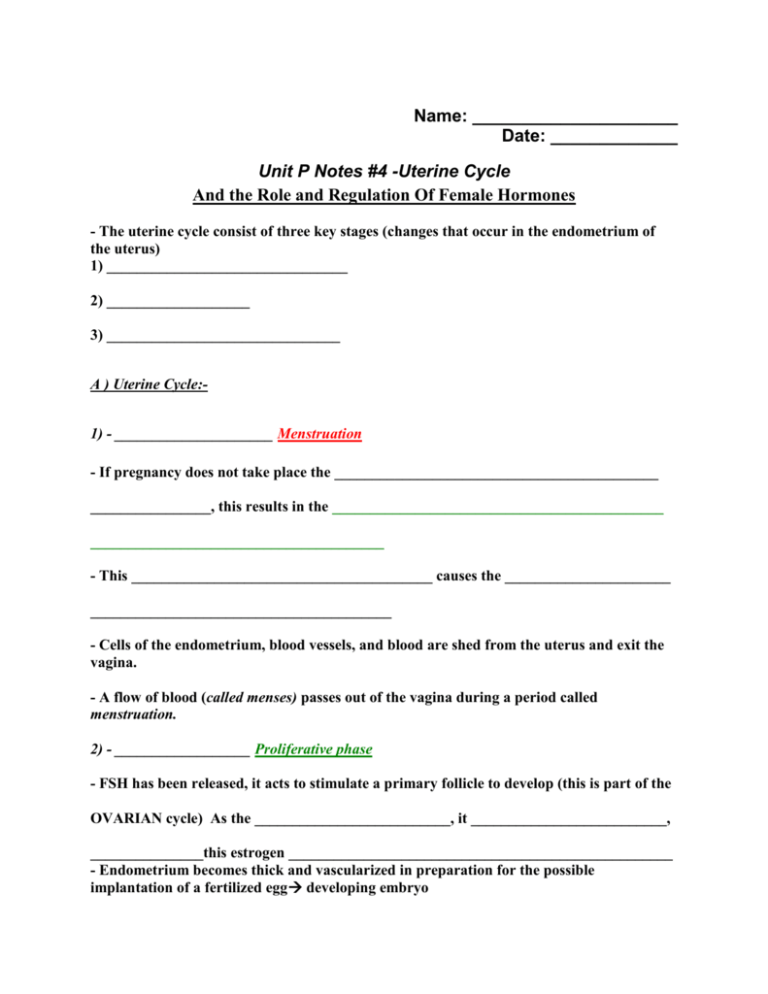
Name: _____________________ Date: _____________ Unit P Notes #4 -Uterine Cycle And the Role and Regulation Of Female Hormones - The uterine cycle consist of three key stages (changes that occur in the endometrium of the uterus) 1) ________________________________ 2) ___________________ 3) _______________________________ A ) Uterine Cycle:1) - _____________________ Menstruation - If pregnancy does not take place the ___________________________________________ ________________, this results in the ____________________________________________ _______________________________________ - This ________________________________________ causes the ______________________ ________________________________________ - Cells of the endometrium, blood vessels, and blood are shed from the uterus and exit the vagina. - A flow of blood (called menses) passes out of the vagina during a period called menstruation. 2) - __________________ Proliferative phase - FSH has been released, it acts to stimulate a primary follicle to develop (this is part of the OVARIAN cycle) As the __________________________, it __________________________, _______________this estrogen ___________________________________________________ - Endometrium becomes thick and vascularized in preparation for the possible implantation of a fertilized egg developing embryo Day 14 - _______________________ - Ovulation occurs (____________________________during ovarian cycle) 3) - Day 15 –28 Secretory Phase - Corpus luteum forms in the ovary and ___________________________________________ ____________________________________________________________________________ - This ________________________________________________________________________ - Uterine Glands produce thick secretions of mucous - Now the uterus is prepared to receive embryo. * If no pregnancy. The corpus luteum degenerates, decrease in progesterone production occurs and the endometrium breaks down Then “Uterine Cycle” starts all over again Day 1-5 B) Control of Cycles by Hormones: 1) FSH - Hypothalamus secretes GnRH (gonadotropic releasing hormone) and causes the anterior pituitary to secrete the following gonadotropic hormones in higher levels FSH (days 1-13, but present all the time) LH (days 14-28, but present all the time) - ____________________________________________________________________________ ____________________________________________________________ - Increase in estrogen concentration should cause the anterior pituitary to stop producing FSH, but in fact there is an initial surge of GnRH released by the hypothalamus. This acts in a __________________________________________________________________ ______________________________________________________________________________ 2. LH - LH is primarily released from the Ant. Pit. Gland between days 12 – 28 - Causes the ___________________________________________________________________ - Corpus luteum _________________________________________________________ - Increase in progesterone cause anterior pituitary to stop producing LH. - By day 15, LH has increased enough to initiate the luteal phase (formation and development of corpus luteum). - Before day 28, Progesterone has maxed out , this causes the anterior pituitary to stop the release of LH. As a result corpus luteum breaks down, so estrogen and progesterone production shuts down. C) The Hormone Oxytocin Role and Regulation - ____________________________________________________________________ ______________________________________________. It is released to stimulate the uterus to contract during delivery. It can also be given in an IV to induce birth. - Oxytocin follows a positive feedback loop until the hypothalamus has detected that the delivery is complete. -Oxytocin also causes mammary glands to release milk. Lobules containing milk contract forcing milk into ducts that lead to the nipple. D) Implantation: - Implantation occurs in the uterus - Fertilization usually occurs in the oviduct. - Embryo embeds itself in the endometrium several days after fertilization. - ____________________________________________________________________________ _____________________________________________________________________________ _____________________________________________________________________________ ______________________________________________________________________________ ______________________________________________________________________________ - HCG is found immediately in the blood, and after a few days later it shows up in the urine. Ex Pregnancy test. (About one week later) Placenta - Contains both maternal and fetal tissue - Area where gas and nutrients exchange occurs. * No exchange of blood cells. ______________________________________________________________________________ ______________________________________________________________________________ ______________________________________________________________________________
